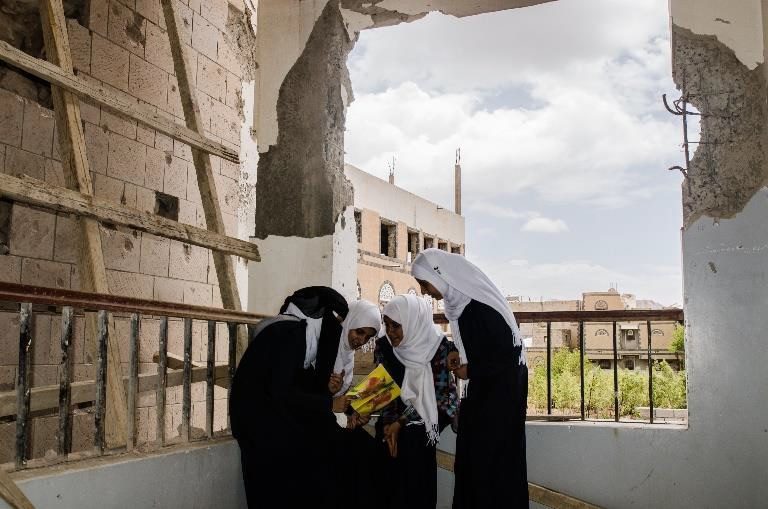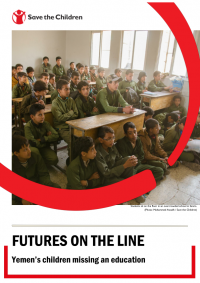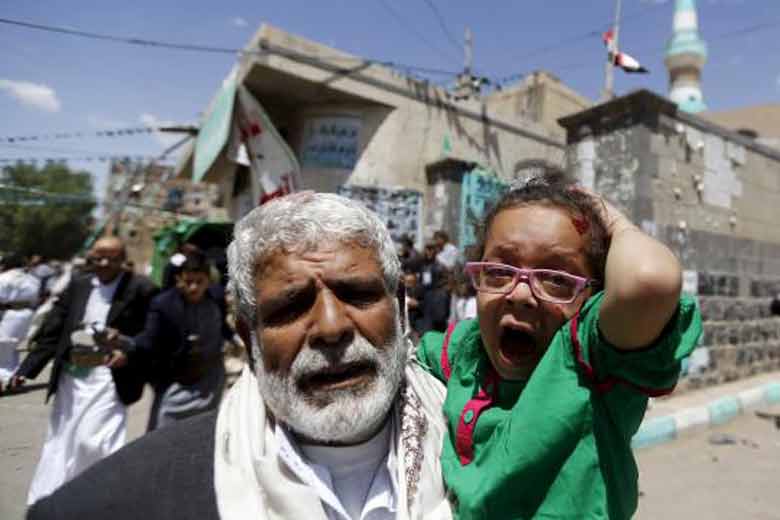
The humanitarian situation in Yemen has deteriorated month on month since the current armed conflict escalated in March 2015. Today 21.2 million people (or 82% of the population) are in need of humanitarian assistance, including nearly 10 million children who are experiencing unprecedented levels of suffering.
In addition to shortages of food, clean water, healthcare and other basic services, the Yemen conflict has severely disrupted the learning of millions of children, putting their development and future at risk. Both access to and quality of education has been impacted by the ongoing crisis.

Save the children organisation made a report about the dire situation.
1,600 schools have been damaged or destroyed, occupied by IDPs or closed due to insecurity. Attacks on school, students and personnel as a result of aerial bombardments or ground attacks has resulted in deaths and injuries of educators and children and rendered many schools unusable – 51 attacks on schools were verified during 2015. The military use of schools has likewise disrupted education and endangered the lives of children – 50 cases of military use of school were verified in 2015. Many schools have also been occupied by internally displaced persons (IDPs) forced from their homes by the conflict, causing schools to be closed or for students and IDPs to share facilities.
1.8 million children have had their education interrupted, often for many months. As of May 2016, 560,000 children remained out of school as a direct consequence of the conflict, adding to 1.6 million school age children who already lacked access to education. A recent assessment in Aden indicates that the conflict has exacerbated gender disparities with the gap between girls and boys access to education widening, at least in that governorate, with 76 girls to every 100 boys in sampled schools compared to 92 girls to 100 boys pre-conflict.
For those children who are in school the quality of education has further deteriorated as a result of the conflict, restricting the benefits that education can provide to children’s well-being and learning at a time when they are at their most vulnerable. Overcrowded classrooms, already a problem before the conflict, has increased, basic equipment including text books, desks and chairs is lacking, teacher absenteeism rates are high; and teaching quality is low.
Even where schools have reopened, insecurity has contributed to a situation where fewer girls are attending classes, exacerbating the gender education gap that pre-existed the conflict. Those boys and girls who are at school often receive poor quality education, aggravated by the current crisis, due to a combination of overcrowded classrooms, shortages of qualified teachers, and lack of basic equipment including desks, chairs and text books
Despite the skills-building and life-saving role that education can play, the US$27.5 million requested under the Yemen Humanitarian Response Plan (YHRP) for education is just 2% funded. Unless funded, planned emergency classroom repairs, provision of basic school furniture and school supplies, establishment of temporary learning spaces, provision of alternative learning spaces for out of school children, and much needed psychosocial support to students cannot be delivered and hundreds of thousands of children will be denied their right to education.



